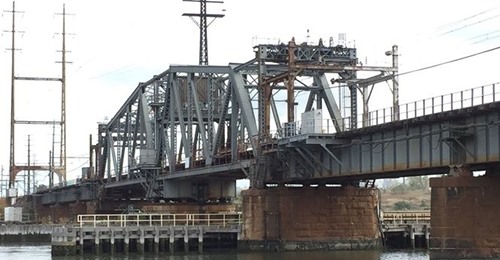I know the EJ&E had a river sub. But I'll bet there are a lot of other railroads in the USA that also had a river sub. Maybe Gil is being deliberately vague to protect people's jobs.
Josh Rawls Looks like fatigue failure to me. It broke at a stress point.
Tom Mason thats a lot to break.
Dan Thomas Weld not a good repair for this old steel. Better to have bolted plates and angles. A very old bridge based on the bottom chord link and pin design.
Don Murphy I agree with the bolted plates and angles. I was Bridge Inspector on River Sub for several years and later Structures Supervisor. There is no way that would have stayed that way for 3 years back then.
Robert Oxley that's good steel though. The old stuff. [He probably means that it had a lot of pure iron from a blast furnace rather than just melted scrap steel.] Probably been red lead painted many times..lol
Kev Chaloner Would seem to be a bad design. The left hand web plate was not run past the angle bracket making the right hand web plate carry most of the load and fail by fatigue. That joint has been flexing for quite some time. I would be checking all the other ones quick smart.
 |
| 1 |
 |
| 2 |
 |
| 3 |
 |
| 4 |
 |
| 4, cropped |
I don't like "talking heads" videos, so I find these hard to watch. But there is some interesting information in them. So I'll just park them at the end of these notes. When he starts talking about "the lesson learned," I consider that the end of the relevant information.
(new window)
(new window) (source)





















































